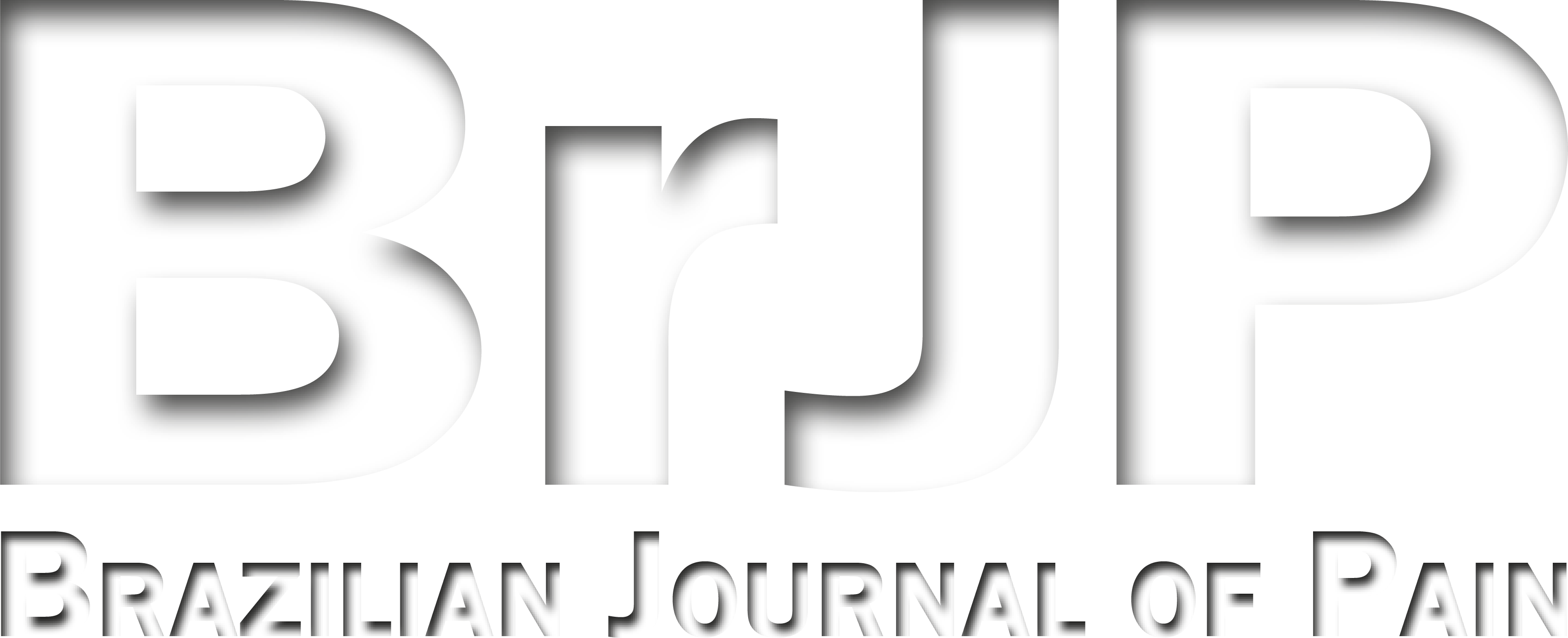Back pain in adolescents: prevalence and associated factors
Dor nas costas em adolescentes: prevalência e fatores associados
Mirna Namie Okamura; Wilma Madeira; Moisés Goldbaum; Chester Luiz Galvão Cesar
Abstract
Keywords
Resumo
Palavras-chave
References
Duthey B. Low Back Pain. 2013.
Swain MS, Henschke N, Kamper SJ, Gobina I, Ottová-Jordan V, Maher CG. An international survey of pain in adolescents. BMC Public Health. 2014;14:447.
Iguti AM, Bastos TF, Barros MB. Back pain in adults: a population-based study in Campinas, São Paulo State, Brazil. Cad Saude Publica. 2015;31(12):2546-58.
Ferreira GD, Silva MC, Rombaldi AJ, Wrege ED, Siqueira FV, Hallal PC. Prevalência de dor nas costas e fatores associados em adultos do Sul do Brasil: estudo de base populacional. Rev Bras Fisioter. 2011;15(1):31-6.
Graup S, Araújo Bergmann ML, Bergmann GG. Prevalence of nonspecific lumbar pain and associated factors among adolescents in Uruguaiana, state of Rio Grande do Sul. Rev Bras Ortop. 2014;49(6):661-7.
Boletim ISA Capital 2015, nº 0, 2017: Aspectos metodológicos e produção de análises. 2017.
ISA Capital - Inquérito de Saúde no Município de São Paulo, 2014. 2014.
Boletim ISA Capital 2015, nº 6, 2017: Estado nutricional da população da cidade de São Paulo. 2017.
Boletim ISA Capital 2015, nº 18, 2018: Atividade física na cidade de São Paulo. 2018.
Gonçalves DM, Stein AT, Kapczinski F. Performance of the Self-Reporting Questionnaire as a psychiatric screening questionnaire: a comparative study with Structured Clinical Interview for DSM-IV-TR. Cad Saude Publica. 2008;24(2):380-90.
Archer KJ, Lemeshow S. Goodness-of-fit test for a logistic regression model fitted using survey sample data. Stata J. 2006;6(1):97-105.
O'Sullivan P, Smith A, Beales D, Straker L. Understanding adolescent low back pain from a multidimensional perspective: implications for management. J Orthop Sport Phys Ther. 2017;47(10):741-51.
Rees CS, Smith AJ, O'Sullivan PB, Kendall GE, Straker LM. Back and neck pain are related to mental health problems in adolescence. BMC Public Health. 2011;11:382-90.
Viana MC, Lim CCW, Pereira FG, Aguillar-Gaxiola , Alonso J, Bruffaerts R. Previous mental disorders and subsequent onset of chronic back or neck pain: findings from 19 countries. J Pain. 2018;19(1):99-110.
Janssens KAM, Rosmalen JGM, Ormel J, Verhulst FC, Hunfeld JAM, Mancl LA. Pubertal status predicts back pain, overtiredness, and dizziness in American and Dutch adolescents. Pediatrics. 2011;128(3):553-9.
Auvinen JP, Tammelin TH, Taimela SP, Zitting PJ, Järvelin MR, Taanila AM. Is insufficient quantity and quality of sleep a risk factor for neck, shoulder and low back pain? A longitudinal study among adolescents. Eur Spine J. 2010;19(4):641-9.
Dey M, Jorm AF, Mackinnon AJ. Cross-sectional time trends in psychological and somatic health complaints among adolescents: a structural equation modelling analysis of 'Health Behaviour in School-aged Children' data from Switzerland. Soc Psychiatry Psychiatr Epidemiol. 2015;50(8):1189-98.
Sjolie AN. Associations between activities and low back pain in adolescents. Scand J Med Sci Sport. 2004;14(6):352-9.
Noll M, Candotti CT, Rosa BN, Loss JF. Back pain prevalence and associated factors in children and adolescents: an epidemiological population study. Rev Saude Publica. 2016;50.
Hestbaek L, Leboeuf-Yde C, Kyvik KO, Manniche C. The course of low back pain from adolescence to adulthood: eight-year follow-up of 9600 twins. Spine. 2006;31(4):468-72.
Pardo IM, Jozala DR, Carioca AL, Nascimento SR, Santucci VC. Automedicação: prática frequente na adolescência? Estudo em uma amostra de estudantes do ensino médio de Sorocaba. Rev Fac Cienc Med Sorocaba. 2013;15(2):11-5.
Arrais PS, Fernandes ME, Pizzol TD, Ramos LR, Mengue SS, Luiza VL. Prevalence of self-medication in Brazil and associated factors. Rev Saude Publica. 2016;50(^sSuppl 2):13s.
Shipton EA. Physical therapy approaches in the treatment of low back pain. Pain Ther. 2018;7(2):127-37.
Submitted date:
07/18/2019
Accepted date:
09/17/2019


